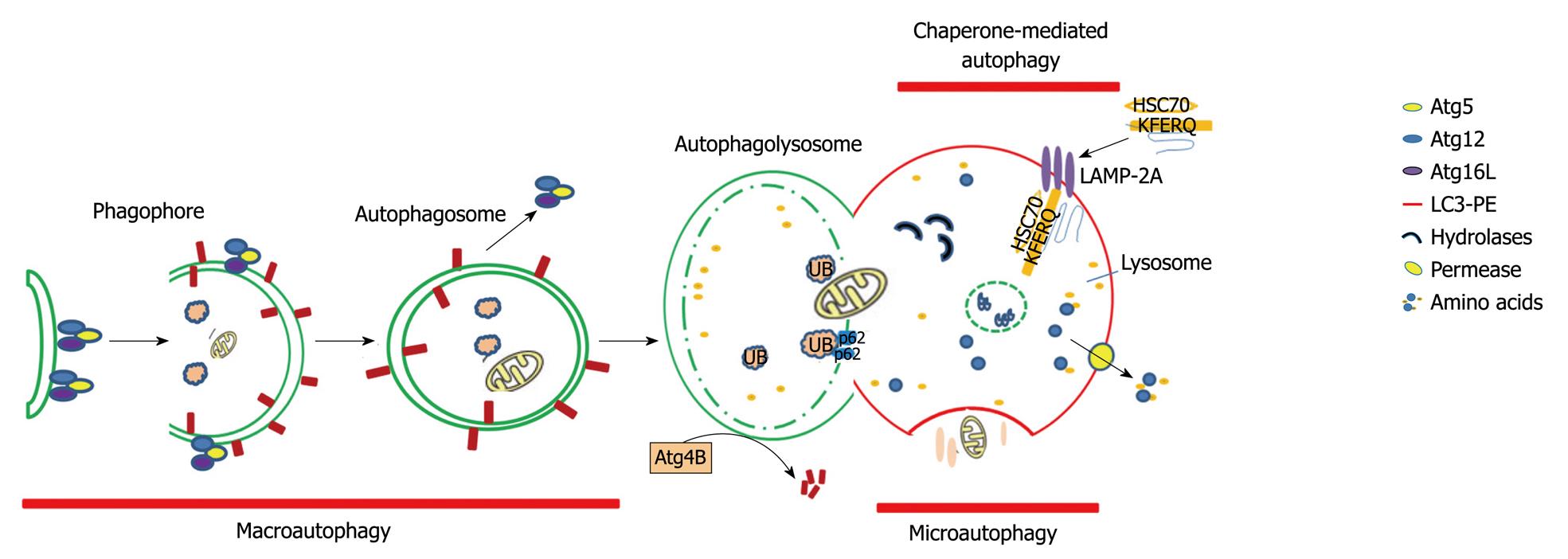Copyright
©2010 Baishideng Publishing Group Co.
World J Biol Chem. Jan 26, 2010; 1(1): 3-12
Published online Jan 26, 2010. doi: 10.4331/wjbc.v1.i1.3
Published online Jan 26, 2010. doi: 10.4331/wjbc.v1.i1.3
Figure 1 Three forms of autophagy: macroautophagy, microautophagy, and chaperone-mediated autophagy.
Macroautophagy starts with the de novo formation of a cup-shaped isolation membrane or phagophore. The elongation of the isolation membrane is driven by Atg genes while engulfing cytosolic components. The formation of double membrane autophagosomes eventually fuse with lysosomes to form autophagolysosomes where engulfed contents are degraded by lysosomal proteases and hydrolases. Amino acids and other small bio-molecules, such as glucose, are transported back into the cytosol for re-use through the lysosomal membrane permease. Microautophagy involves the engulfment of cytosolic proteins, organelles, and even a piece of nuclear material instantly at the lysosomal membrane by invagination, protrusion, and separation. Chaperone-mediated autophagy is a process of direct transport of a group of proteins that contain a KFERQ motif, which associates with hsc70 and its co-chaperones. This complex then binds with LAMP-2A on the lysosomal membrane. All forms of autophagy subsequently lead to the degradation of intra-autophagosomal components by lysosomal hydrolases. PE: Phosphatidylethanolamine.
- Citation: Ding WX. Role of autophagy in liver physiology and pathophysiology. World J Biol Chem 2010; 1(1): 3-12
- URL: https://www.wjgnet.com/1949-8454/full/v1/i1/3.htm
- DOI: https://dx.doi.org/10.4331/wjbc.v1.i1.3









